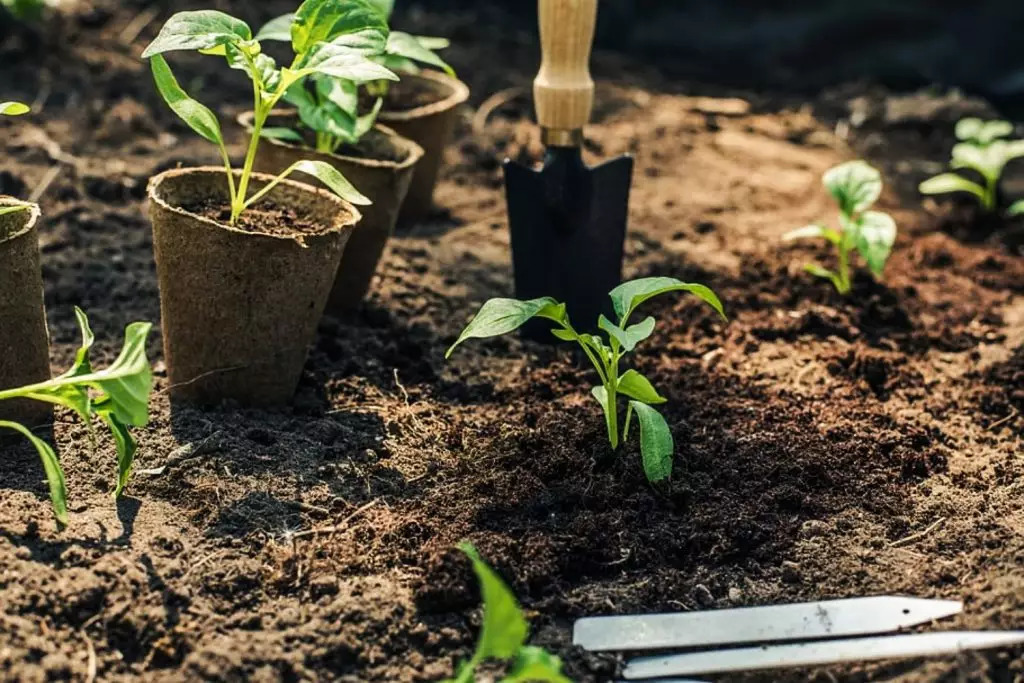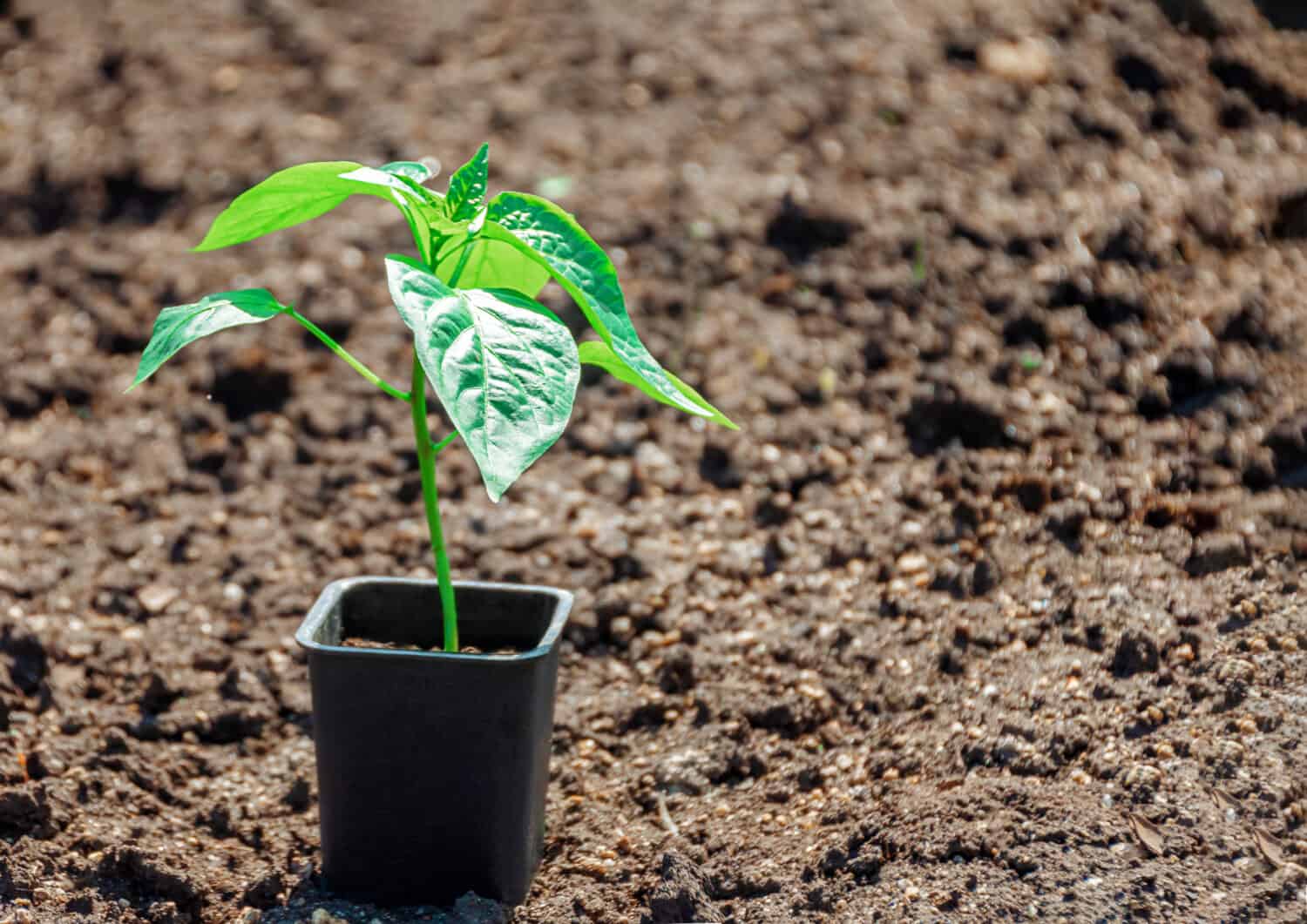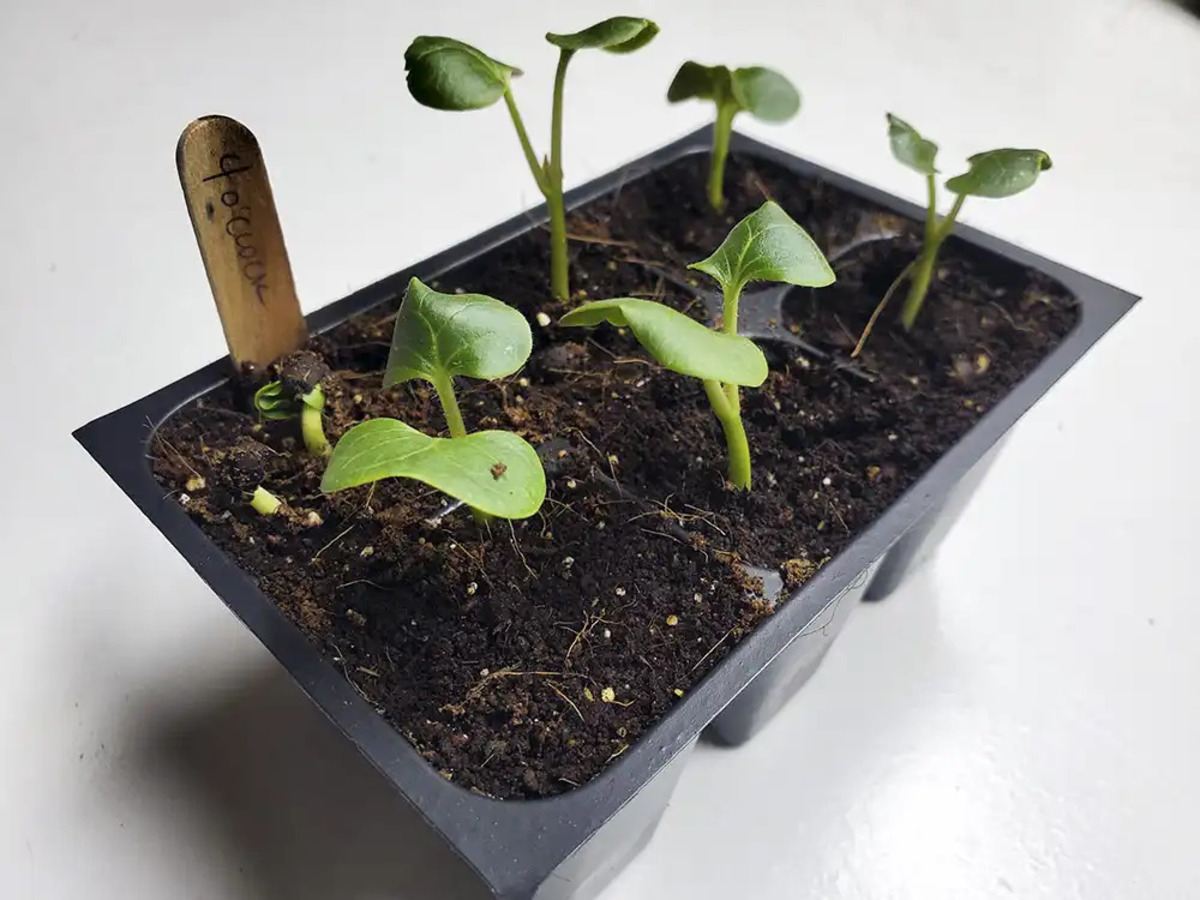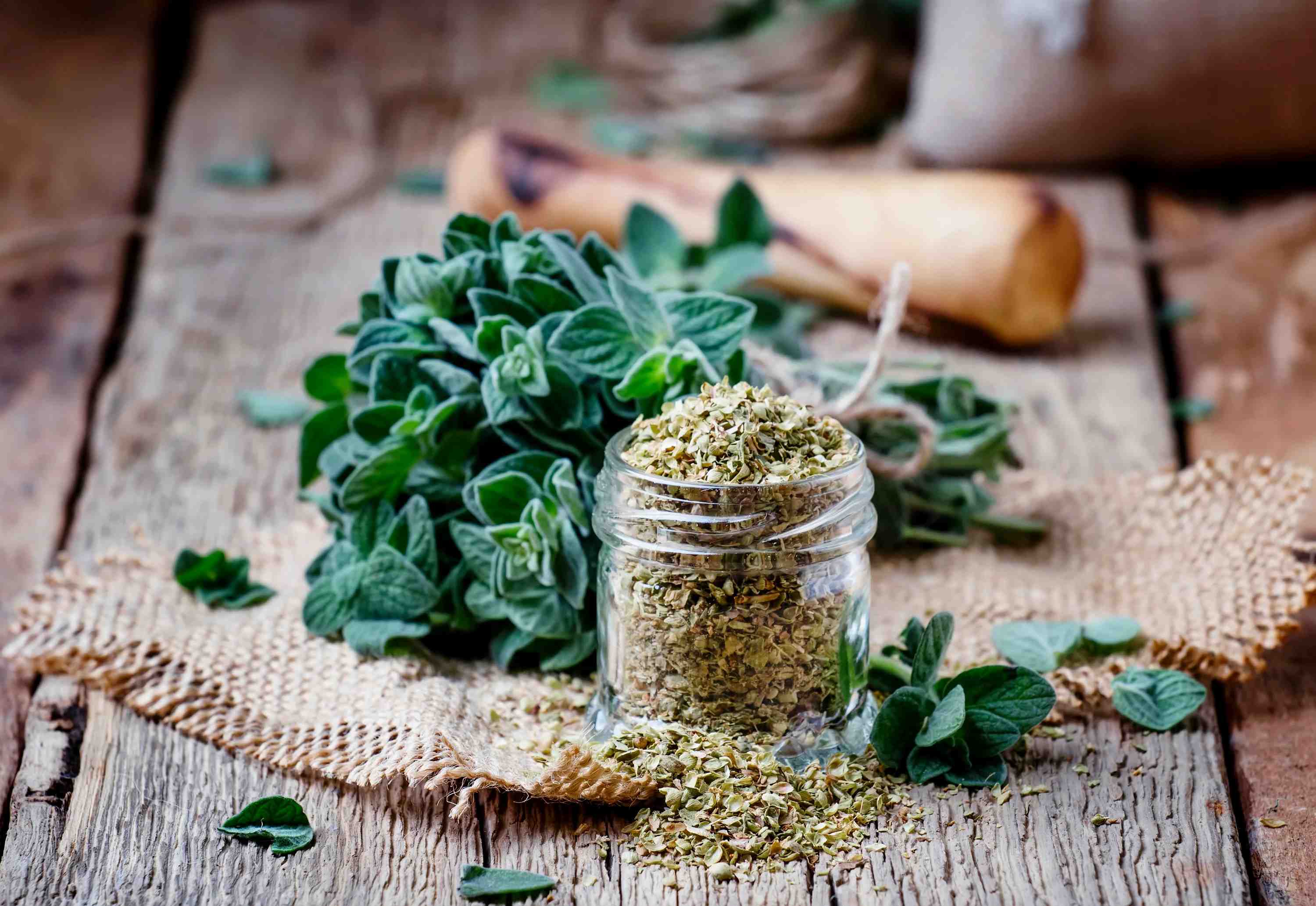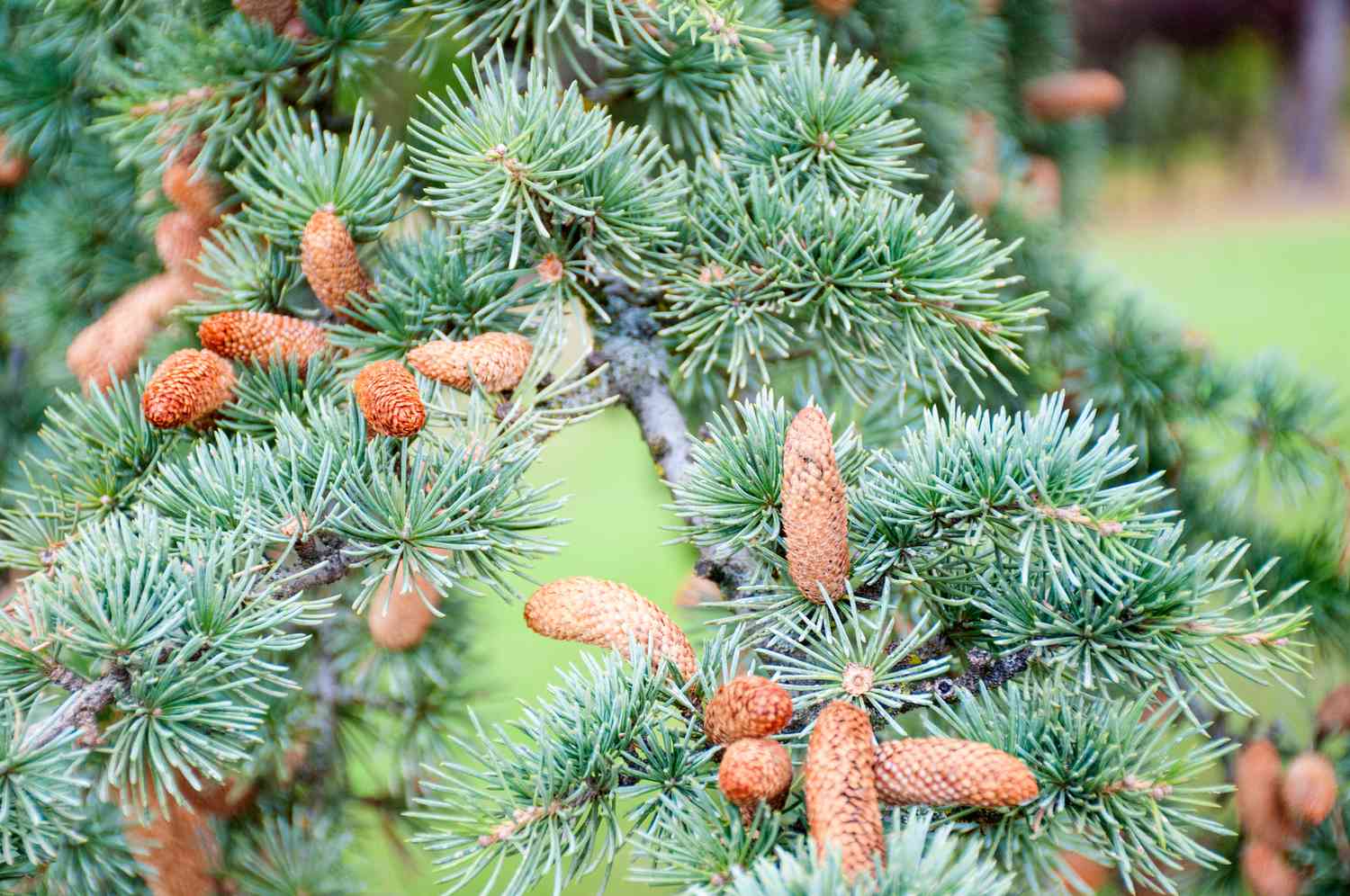Home>Types of Gardening>Ornamental Gardening>What Do Pea Seedlings Look Like


Ornamental Gardening
What Do Pea Seedlings Look Like
Published: January 7, 2024
Discover what pea seedlings look like in this comprehensive guide to ornamental gardening. Learn how to identify and care for these vibrant plants and enhance your garden today.
(Many of the links in this article redirect to a specific reviewed product. Your purchase of these products through affiliate links helps to generate commission for Chicagolandgardening.com, at no extra cost. Learn more)
Table of Contents
Introduction
Ornamental gardening is a delightful hobby that allows individuals to beautify their outdoor spaces with an array of vibrant and visually appealing plants. One popular choice among gardeners is the cultivation of pea seedlings. Peas are not only delicious additions to a vegetable garden, but their seedlings also offer a stunning ornamental display.
In this article, we will explore the characteristics of pea seedlings, their leaf, stem, and root structures, as well as their growth patterns. We will also discuss the environmental requirements necessary for their successful growth and share valuable tips on how to care for and maintain these delicate seedlings. Additionally, we will address common problems that may arise and provide practical solutions to ensure the health and vigor of your pea seedlings.
Whether you are an experienced gardener or a novice just starting your green thumb journey, understanding the intricacies of pea seedlings will empower you to create a flourishing garden filled with natural beauty. So, let’s dive in and discover the world of pea seedlings and all that they have to offer.
Characteristics of Pea Seedlings
Pea seedlings possess distinctive characteristics that set them apart from other plant varieties. Understanding these features is crucial for identifying and nurturing healthy pea seedlings.
One of the primary characteristics of pea seedlings is their delicate and tender appearance. As they emerge from the soil, you will notice that they have slender stems with a pale green color. These stems are thin and flexible, allowing the seedling to sway gently in the breeze. The leaves of pea seedlings are typically small, oval-shaped, and arranged in an alternate pattern along the stem.
Another notable characteristic of pea seedlings is their tendency to develop a light fuzziness on their stems and leaves. This fuzzy texture gives the seedlings a velvety appearance, adding to their overall charm. Additionally, pea seedlings often exhibit a graceful curvature as they grow, bending slightly towards the light source.
When observing pea seedlings, you may also notice the presence of tiny tendrils. These tendrils are delicate, curling structures that emerge from the stem and serve as a means for the seedling to support itself as it grows. They will later wrap around surrounding structures, such as stakes or trellises, providing the necessary support for the maturing pea plant.
One distinguishing feature of pea seedlings is the presence of cotyledons, also known as seed leaves. These initial leaves are usually broad and rounded, providing the seedling with stored nutrients until the true leaves develop. These cotyledons may appear slightly different in color from the true leaves and are shed as the seedling grows.
Overall, the characteristics of pea seedlings display a delicate grace and unique charm. By familiarizing yourself with these characteristics, you will be better equipped to identify healthy pea seedlings and provide the care they require for optimal growth.
Leaf Structure
The leaf structure of pea seedlings is an important aspect to consider when identifying and caring for these plants. Understanding the anatomy of their leaves can help you provide the necessary care and ensure the healthy development of your pea seedlings.
Pea seedlings have compound leaves, which means that each leaf is comprised of multiple leaflets. These leaflets are typically arranged in pairs along the main stalk or petiole. The number of leaflets can vary, but most pea seedlings have an odd number of leaflets, ranging from three to seven.
The shape of the leaflets is generally oval or elliptical, with a slightly pointed tip. They have a smooth texture and a vibrant green color, which is indicative of healthy growth. One distinctive feature of pea seedling leaves is their soft and delicate appearance, adding to the overall aesthetics of these ornamental plants.
The leaf arrangement on the stem of pea seedlings is alternate, meaning that the leaves alternate their position along the stem rather than being directly across from each other. This arrangement allows for optimum exposure to sunlight and ensures that each leaf receives an adequate amount of light for photosynthesis.
As pea seedlings grow, the size of the leaves increases along with the overall height of the plant. The true leaves, which develop after the cotyledons, have a more defined shape and structure compared to the initial seed leaves. These true leaves are fully functional and responsible for the photosynthesis process critical to the plant’s growth and development.
Observing the leaf structure of your pea seedlings can provide valuable insights into their health and vigor. Look for vibrant green coloration, smooth texture, and a well-balanced leaf arrangement along the stem. These indicators will help you assess the overall condition of your plants and make any necessary adjustments to ensure their successful growth.
Stem Structure
The stem structure of pea seedlings plays a vital role in their growth and overall stability. Understanding the characteristics of their stems will help you provide the necessary support and care for these delicate plants.
Pea seedlings have slender stems that are usually pale green in color. These stems are flexible and slightly wiry, allowing the seedling to bend and sway with the wind. As the seedling grows, the stem elongates, enabling the plant to reach for the sunlight necessary for photosynthesis.
One notable feature of pea seedling stems is their ability to produce delicate tendrils. These tendrils emerge from the nodes along the stem and are essential for the plant’s support as it grows taller. The tendrils exhibit a remarkable sensitivity to touch, allowing them to wrap around nearby structures, such as trellises or stakes, providing stability and support for the maturing plant.
The stem structure of pea seedlings also contributes to their overall aesthetic appeal. You may notice a slight fuzziness or velvety texture on the stems, giving them a delicate and charming appearance. This fuzziness is caused by small hairs or trichomes that cover the stem surface.
Another essential aspect of pea seedling stem structure is their ability to sustain the transport of water, nutrients, and sugars throughout the plant. The vascular system within the stem allows for the efficient movement of these vital substances, ensuring proper growth and development.
It is important to support the growing stems of pea seedlings to prevent bending or breaking. Providing a vertical structure, such as a trellis or stakes, will ensure that the stems have the necessary support as they continue to elongate. This will also aid in optimizing sunlight exposure and air circulation, contributing to the overall health of the plants.
By understanding the structure of the stems, you can effectively care for and maintain healthy pea seedlings. Take note of their flexibility, the presence of tendrils, and the need for support as they grow, enabling you to create an ideal environment that promotes their successful growth and development.
Root Structure
The root structure of pea seedlings is essential for their overall health and survival. Understanding the characteristics of their roots will enable you to provide the necessary care and create an optimal environment for these plants to thrive.
Pea seedlings develop a fibrous root system. This means that instead of having a single dominant taproot, they produce numerous small, branching roots that spread out in various directions. This fibrous root system allows the seedlings to effectively absorb water and nutrients from the surrounding soil, promoting healthy growth.
The root structure of pea seedlings consists of fine, thread-like roots that extend from the main stem and directly into the soil. These roots are responsible for anchoring the plant and providing stability as it grows taller. They also play a crucial role in the absorption of water and nutrients, which are necessary for the plant’s overall development.
As pea seedlings mature, their root systems continue to expand and become more developed. This allows the plants to access a larger area of soil and absorb a greater amount of resources. Healthy pea seedling roots will be white or light in color, indicating active growth.
It is important to provide a suitable growing environment for the root structure of pea seedlings. Ensure that the soil has good drainage, as excessive moisture can lead to root rot and growth issues. Additionally, regular watering is necessary to keep the soil consistently moist, but not waterlogged.
Transplanting pea seedlings can also impact their root structure. Take care to minimize any disruption to the roots when moving the seedlings to a new location, as this can slow down their growth and development. Handle the seedlings gently and transplant them into a well-prepared soil bed to optimize root establishment.
By understanding the structure and importance of the root system, you can provide the necessary care to ensure the healthy growth and development of your pea seedlings. A well-established and robust root structure will support the overall health and vitality of the plants as they continue to thrive in your garden.
Growth Patterns
Pea seedlings exhibit specific growth patterns that are influenced by various factors such as genetics, environmental conditions, and cultural practices. Understanding these growth patterns is essential for maintaining healthy and productive pea plants in your garden.
Pea seedlings typically follow a vertical growth pattern, with the stem elongating as the plant develops. As the stem grows taller, it produces leaves and begins to branch out, creating a bushier appearance. The growth pattern of pea seedlings can be described as indeterminate, meaning they continue to grow and produce new leaves and stems throughout their lifespan.
Pea seedlings also display a characteristic known as phototropism. This phenomenon involves the plant’s ability to bend and orient itself towards a light source, typically the sun. This response ensures that the leaves receive maximum exposure to sunlight for efficient photosynthesis.
Another interesting growth pattern exhibited by pea seedlings is their ability to fix nitrogen through a symbiotic relationship with beneficial soil bacteria called rhizobia. These bacteria form nodules on the root system of the plants, allowing them to convert atmospheric nitrogen into a usable form. This nitrogen fixation process enhances the overall health and growth of pea plants.
Proper spacing and support are crucial for managing the growth patterns of pea seedlings. To avoid overcrowding, ensure that you plant the seedlings at the recommended spacing, typically around 4-6 inches apart. Providing a trellis or stakes for support will help contain the upward growth and prevent the plants from sprawling on the ground.
Throughout the growth process, regular pruning of pea seedlings can also help maintain a compact and productive habit. By removing excessive side shoots and excessive foliage, you can enhance air circulation, increase light penetration, and focus the plant’s energy on producing healthy pods.
Overall, understanding the growth patterns of pea seedlings allows you to effectively manage their development and optimize their productivity. By providing the appropriate support, spacing, and pruning, you can guide the growth of your pea plants and enjoy a bountiful harvest of delicious and nutritious peas.
Environmental Requirements
Pea seedlings have specific environmental requirements that must be met in order for them to thrive and reach their full potential. By understanding and providing these necessary conditions, you can create an ideal growing environment for your pea plants.
One crucial environmental requirement for pea seedlings is sunlight. Peas are considered cool-season crops, and they thrive in full sun or partial shade. Aim to provide at least 6-8 hours of direct sunlight each day to ensure optimal growth. If you are growing pea seedlings in a hotter climate, providing shade during the hottest part of the day can help prevent stress and maintain plant health.
Another important factor to consider is soil quality. Pea seedlings prefer well-draining soil that is rich in organic matter. Prior to planting, prepare the soil by incorporating compost or well-rotted manure to improve fertility and drainage. The ideal pH range for pea seedlings is slightly acidic to neutral, around 6.0 to 7.5.
Pea seedlings are also sensitive to waterlogged conditions, so ensure that the soil is adequately drained. Overwatering can lead to root rot and other diseases. Water the pea seedlings consistently, keeping the soil moderately moist but not overly saturated. During periods of heavy rainfall, provide additional drainage or raised beds to prevent waterlogging.
Temperature is another important environmental factor for pea seedlings. They prefer cooler temperatures, generally ranging from 45°F to 75°F (7°C to 24°C). They can tolerate light frosts but are sensitive to extreme heat. Planting pea seedlings in early spring or late summer to early fall, depending on your climate, can help avoid prolonged exposure to high temperatures.
Lastly, adequate air circulation is crucial for the health of pea seedlings. Good airflow helps prevent the buildup of moisture and reduces the risk of fungal diseases. Avoid overcrowding by providing the recommended spacing between plants and consider removing any excessive foliage or side shoots to improve air movement through the plants.
By meeting the environmental requirements of pea seedlings, you can create a favorable growing environment that promotes their growth and ensures their overall health. Providing sufficient sunlight, well-draining soil, appropriate watering, and proper temperature and air circulation will help your pea plants thrive and yield a delicious harvest of peas.
Care and Maintenance of Pea Seedlings
Caring for and maintaining pea seedlings is essential to ensure their healthy growth and successful development. By following a few key practices, you can provide the necessary care and attention needed for your pea plants to thrive.
Watering is an important aspect of caring for pea seedlings. Keep the soil consistently moist but not waterlogged. Regularly check the moisture levels by sticking your finger about an inch into the soil. If it feels dry, it’s time to water. Aim to provide a deep watering rather than frequent shallow watering to encourage root growth. Mulching around the plants can help retain moisture and suppress weed growth.
Supporting the growing plants is crucial, especially as they start to produce tendrils. Provide a trellis, stakes, or a cage system to support the plants as they grow taller. Secure the tendrils to the support structure gently to avoid damaging the plants.
Fertilization is also important for the healthy growth of pea seedlings. Peas are nitrogen-fixing plants, but an additional boost of phosphorus-rich fertilizer at planting time can provide a good start. Avoid excessive nitrogen fertilization as it can lead to excessive leaf growth at the expense of pod development. Consider using organic fertilizers, such as compost or well-rotted manure, to provide a gradual release of nutrients.
Regular weeding is necessary to reduce competition for nutrients and water. Keep the area around your pea seedlings free from weeds that can hinder their growth. Be careful when weeding to avoid disturbing the delicate root system of the seedlings.
Regular monitoring for pests and diseases is vital. Pea seedlings can be susceptible to pests like aphids and pea weevils, as well as diseases like powdery mildew and root rot. Implementing proper pest and disease management techniques, such as using organic insecticides or practicing crop rotation, is essential in preventing and controlling these issues.
Pruning is another important aspect of caring for pea seedlings. Pinching off the tips of the plants when they reach the desired height can stimulate bushier growth and promote branching, resulting in more flowers and pods. Additionally, removing any diseased or damaged foliage can help prevent the spread of diseases within the plant.
Observation and regular care are key in maintaining healthy pea seedlings. Monitor for any signs of stress, nutrient deficiencies, or diseases. Promptly address any issues that arise to ensure the well-being of your plants. By providing proper care, you will be rewarded with vigorous and productive pea plants.
Common Problems and Solutions
While caring for pea seedlings, you may encounter common problems that can affect their health and productivity. By being aware of these issues and implementing appropriate solutions, you can effectively address and mitigate the challenges that arise.
1. Pest Infestations: Pea seedlings can be susceptible to pests such as aphids, pea weevils, and garden slugs. Regularly inspect your plants and take action at the first sign of infestation. Use organic insecticides, such as neem oil or insecticidal soap, or employ natural pest control methods like introducing beneficial insects or handpicking pests.
2. Disease: Pea seedlings are susceptible to diseases such as powdery mildew, root rot, and bacterial wilt. Ensure proper air circulation and avoid overwatering to prevent fungal diseases. Treat fungal diseases with fungicides labeled for use on peas. Practice good sanitation by removing and disposing of any infected plant material.
3. Yellowing Leaves: Yellowing leaves may indicate a nitrogen deficiency or an issue with pH levels. Apply a nitrogen-rich fertilizer or amend the soil with organic matter to address nutrient deficiencies. Check the pH of the soil and adjust if necessary to maintain optimal growing conditions.
4. Wilting: Wilting can be a sign of inadequate watering or root diseases. Ensure proper watering by providing consistent moisture to the plants. If wilting persists, examine the roots for signs of rot or damage. Consider adjusting watering practices or treating the root issue accordingly.
5. Poor Pod Formation: If your pea seedlings are not producing pods, it could be due to inadequate pollination or nutrient deficiencies. Ensure that there are pollinators, such as bees, in your garden. Consider hand-pollinating the flowers with a soft bristle brush. Check the nutrient levels in the soil and provide appropriate fertilization to support pod formation.
6. Overcrowding: Overcrowding can lead to poor air circulation and increased susceptibility to disease and pests. Thin out the seedlings to the recommended spacing to allow proper growth and development of each plant.
Regular observation, timely intervention, and appropriate care are essential in managing common problems that may arise with pea seedlings. By implementing proper pest and disease control practices, maintaining optimum watering and nutrition, and ensuring proper spacing, you can overcome challenges and enjoy healthy and productive pea plants in your garden.
Conclusion
Cultivating pea seedlings in your garden can bring both aesthetic beauty and delicious produce to your home. Understanding the characteristics, leaf and stem structure, root system, growth patterns, and environmental requirements of pea seedlings is key to providing them with the necessary care and ensuring their successful growth.
By paying attention to the specific needs of pea seedlings, such as sunlight, well-draining soil, proper watering, and adequate support, you can create an environment that promotes their health and productivity. Regular monitoring for pests and diseases, along with timely intervention and appropriate care, will help maintain the well-being of your pea plants.
Remember to provide sufficient air circulation, maintain appropriate spacing, and support the growing stems with trellises or stakes. Proper nutrition is crucial, and using organic fertilizers or compost can provide necessary nutrients while minimizing the risk of excessive foliage growth.
Lastly, be aware of common problems that can affect pea seedlings, such as pest infestations, diseases, yellowing leaves, wilting, poor pod formation, and overcrowding. Promptly address these issues with suitable solutions, whether it’s using organic insecticides, adjusting watering practices, treating nutrient deficiencies, or thinning out crowded plants.
By implementing these care and maintenance practices, you can ensure the healthy development of your pea seedlings, leading to a bountiful harvest of delicious peas. So, roll up your sleeves, get your hands dirty, and enjoy the rewarding journey of nurturing ornamental pea seedlings in your garden.

